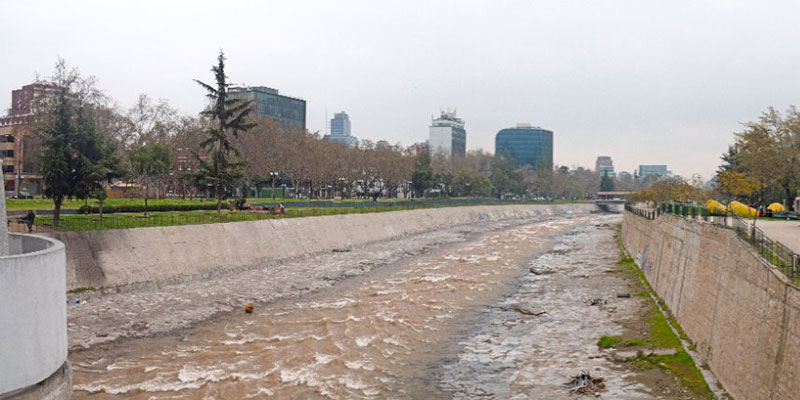The Mapocho River, which provides water to thousands of Santiago residents, has been dwindling as the Chilean drought continues.
As millions face cuts to water use, how can desalination and water reuse increase water resilience?
In a recent news conference, Claudio Orrego, governor of Chile’s Santiago metropolitan region, had a hard fact for the city’s nearly 7 million residents: “A city can’t live without water.”
For the first time in Santiago’s 481-year history, there might not be enough water to go around. The flows of the Maipo and Mapocho rivers have been dwindling as Chile’s crippling drought begins a 13th year.
The governor announced a three-level alert system:
- Green Alert: Public announcements that encourage water conservation and groundwater use.
- Early Warning and Yellow Stages: Water pressure is lowered.
- Red Alert: Water rationing with rolling cuts.
Whether rationing is declared will depend on the amount of winter precipitation, and river shortfalls will determine whether the cuts will come every four, six, or 12 days. If Red Alert is announced, outages could affect 1.7 million customers, but only in one part of the city and for no longer than 24 hours at a time.
The plan affects approximately 142,000 households supplied by the Mapocho River, which crosses Santiago from east to west, and 1,545,000 more dwellings supplied by the Maipo River, which serves communities in the south. Areas supplied by well water or other sources will be exempt.
Drought Mitigation Measures
Orrego told his constituents “It’s important for citizens to understand that climate change is here to stay. It’s not just global, it’s local.”
What are some of the measures Chile is embracing as its drought continues?
On one hand, the country has passed a national law prohibiting the mining sector from using fresh water. This has led to the widespread adoption of seawater desalination to provide fresh water to keep the mines producing.
There are other technologies that the country could put to use on a larger scale than it currently is. The volume of wastewater from a city of nearly 7 million offers an opportunity for widespread application of water reuse technology, yet there is no national policy in place to encourage it. Treated wastewater can be used for nonpotable applications, including landscape irrigation, street cleaning, dust reduction, vehicle washing, and toilet flushing, dramatically increasing drought resilience.
Reducing the national water deficit could also be achieved through decentralized treatment efforts. Decentralization, or placing treatment at the point of need, can address water shortage locally, saving miles of pipeline construction and allowing communities to reuse the wastewater they generate.
Fluence offers decentralized treatment technologies that can help.
If you’re interested in desalination, Fluence offers NIROBOX™ modular desalination plants, which are well-suited to the mining industry. With modular construction, the plants are scalable as needs change and can be moved along with operations
On the wastewater treatment side, Fluence offers Aspiral™ modular wastewater treatment plants. The plants provide water reuse with a small-footprint so they can be easily hidden and emit little odor or noise. Aspiral™ effluent meets the highest reuse standards, including California’s Title 22 and China’s Class 1A. The benefits are noticeable: The supply of available water virtually increases without dependence on precipitation and river flows.
Fluence can deliver Aspiral™ and NIROBOX™ plants with no initial investment through its Water Management Services program. Supplying infrastructure through performance-based contracts like BOO and BOOT relieves clients of risk and the requirements of long-term operations and maintenance. With Water Management Services, Fluence builds, owns, and operates plants, and clients pay only for the water services they use. Contact Fluence to learn more.

